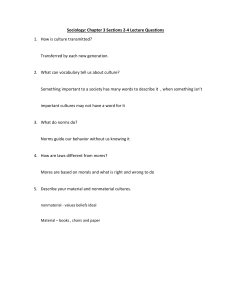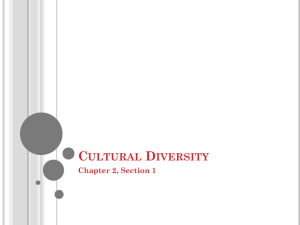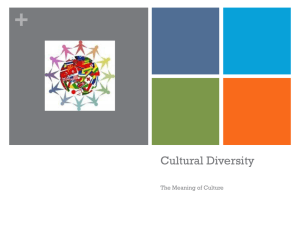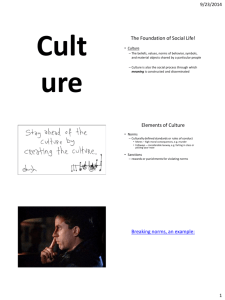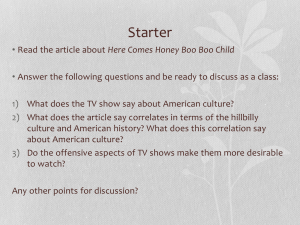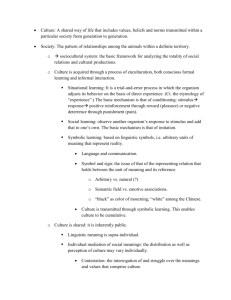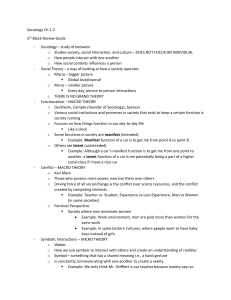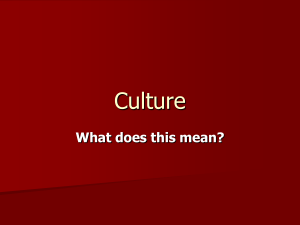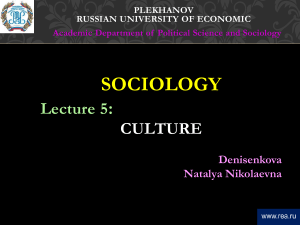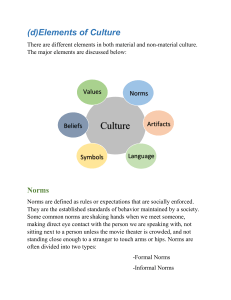Culture
advertisement
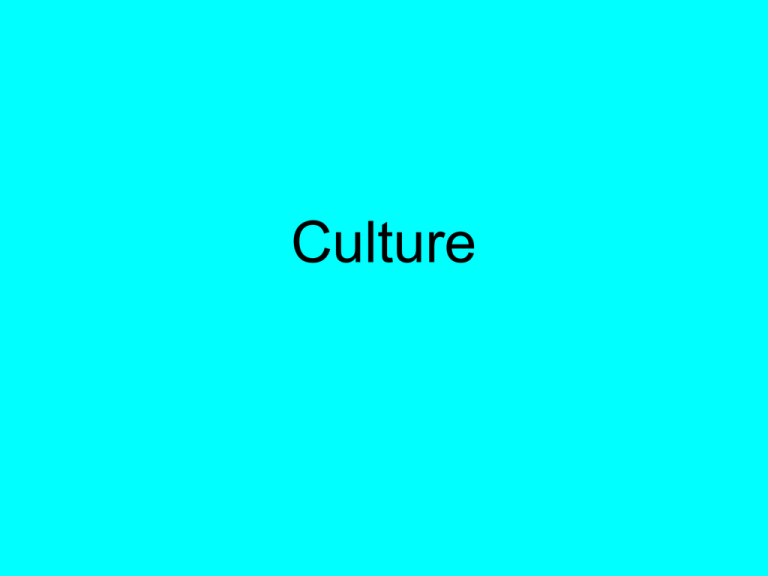
Culture What is Culture? Culture is all shared products of human groups. These include physical objects, beliefs, values and behaviors Material vs. Nonmaterial Material Culture Physical objects made and used by people Ex. Cars, Books, Clothes Nonmaterial Culture Human ideological creations Ex. Language, Religion, Government Culture vs. Society Culture deals with things (products and ideas) people create Society is the people themselves Five Basic Components of Culture 1. 2. 3. 4. 5. Symbols Language Values Norms Technology Symbols Anything that stands for something else; shared meaning Symbols are created by cultures and taught to the young Symbols change from culture to culture Language Organization of written or spoken symbols into a standardized system Language can vary from culture to culture and even in separate regions within a culture Language is a great example of a cultural symbol Values Shared beliefs about what is good or bad, right or wrong, desirable or undesirable. Values will determine both cultural character and individual character It dictates what materials or nonmaterial a culture will produce Norms Shared rules of conduct that tell people how to act in specific situations (expectation of behavior) Folkways: Norms with no moral significance (getting to class on time) Mores: Strong moral significance (dishonesty, murder, theft) Technology Combination of a cultures objects and rules Different cultures rely on different tools to combat their environment and you are judged by your mastery of those tools (computer skills are needed skills… but being a hacker is not acceptable behavior) Cultural Traits A tool, act, or belief that is related to a particular situation or need. Examples: greetings, clothing, music, etc. Cultural Complexities Clusters of interrelated traits Examples: Baseball… throwing, hitting, pitching, fielding, running, sliding, rules, etc. Cultural Patterns Combining cultural clusters to make an interrelated whole Example: American music, American food, American Athletics Cultural Variation What do we all have in common? Cultural universals: needs that all societies must meet (cooking, medicine, language) Dealing with Variation Ethnocentrism: tendency to view ones own culture as superior to others Normal reaction, provides unity If extreme, can create a loss of diversity Dealing with Variations Cultural Relativism: belief that cultures should be judged by their own standards Variations within Societies Subculture: unique characteristics of groups in society that share values, norms, and behaviors (that are not shared by the entire population) Helps make society more interesting Most subcultures present no threat to society Ex. German Village Variations within Society Counterculture: A group rejects the values, norms, and beliefs of a larger society and replaces them with a new set of cultural patterns. Can be detrimental (bad) to a society Ex. Hippies
